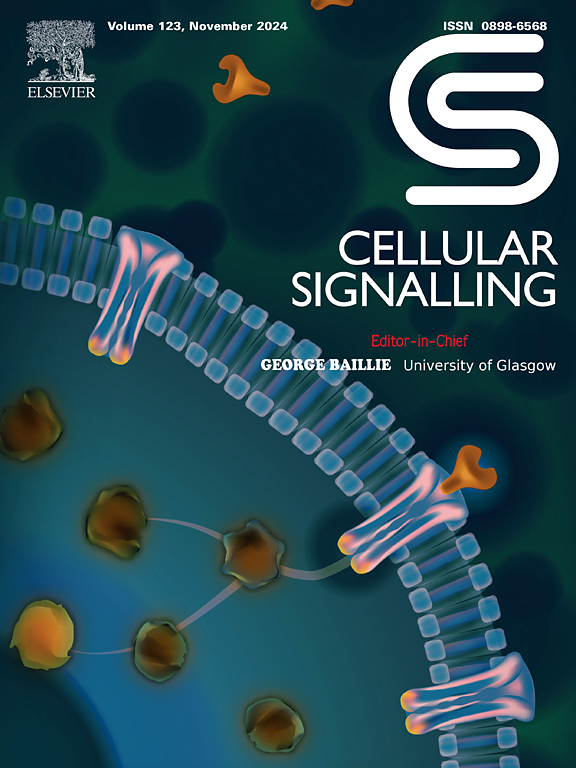FAAP100:A biomarker based on pan-cancer analysis, promotes the progression of lung adenocarcinoma
IF 4.4
2区 生物学
Q2 CELL BIOLOGY
引用次数: 0
Abstract
FAAP100 plays an essential role in DNA damage repair, with dysregulation associated with elevated cancer susceptibility. Nevertheless, comprehensive pan-cancer analyses examining FAAP100 prognostic significance, immune correlations, and epigenetic regulation remains unexplored. This study systematically characterized FAAP100 across 33 cancer types utilizing multi-omics data from TCGA, UALCAN, cBioPortal, TIMER2.0, and CPTAC. Analytical assessments included expression profiles, prognostic significance, and diagnostic utility, alongside associations with DNA methylation, immune cell infiltration, immune checkpoint gene expression, tumor mutational load (TMB), microsatellite instability (MSI), and drug resistance. Findings revealed significant FAAP100 upregulation across multiple cancer types, exhibiting inverse correlations to patient survival. Genomic characterization identified associations between FAAP100 overexpression and both copy number amplification and promoter hypomethylation. Immune profiling demonstrated robust correlations with immune cell infiltration levels and checkpoint molecule activity. Functional assays utilizing PC9 and H1299 cells indicated that FAAP100 enhances cellular proliferation and migration while inhibiting apoptosis processes. In vivo studies confirmed tumor growth suppression upon FAAP100 knockdown. Collectively, this multi-omics investigation identifies FAAP100 as a pan-cancer oncogene driver, highlighting its potential as both a prognostic biomarker and therapeutic target. The integrated analysis of expression patterns, epigenetic modifications, immune characteristics, and genomic alterations elucidates the mechanistic involvement of FAAP100 in tumor progression, providing a foundation for clinical application in precision oncology approaches..
FAAP100:基于泛癌分析的生物标志物,促进肺腺癌的进展
FAAP100在DNA损伤修复中发挥重要作用,其失调与癌症易感性升高相关。然而,关于FAAP100预后意义、免疫相关性和表观遗传调控的全面泛癌分析仍未得到探索。本研究利用来自TCGA、UALCAN、cbiopportal、TIMER2.0和CPTAC的多组学数据,系统地表征了33种癌症类型中的FAAP100。分析评估包括表达谱、预后意义和诊断效用,以及与DNA甲基化、免疫细胞浸润、免疫检查点基因表达、肿瘤突变负荷(TMB)、微卫星不稳定性(MSI)和耐药性的关联。研究结果显示,FAAP100在多种癌症类型中显著上调,与患者生存率呈负相关。基因组特征鉴定了FAAP100过表达与拷贝数扩增和启动子低甲基化之间的关联。免疫谱分析显示与免疫细胞浸润水平和检查点分子活性有很强的相关性。利用PC9和H1299细胞进行的功能实验表明,FAAP100促进细胞增殖和迁移,同时抑制细胞凋亡过程。体内研究证实,FAAP100基因敲低可抑制肿瘤生长。总的来说,这项多组学研究确定FAAP100是一种泛癌癌基因驱动因子,突出了其作为预后生物标志物和治疗靶点的潜力。通过对表达模式、表观遗传修饰、免疫特性和基因组改变的综合分析,阐明了FAAP100在肿瘤进展中的机制参与,为精准肿瘤学方法的临床应用提供了基础。
本文章由计算机程序翻译,如有差异,请以英文原文为准。
求助全文
约1分钟内获得全文
求助全文
来源期刊

Cellular signalling
生物-细胞生物学
CiteScore
8.40
自引率
0.00%
发文量
250
审稿时长
27 days
期刊介绍:
Cellular Signalling publishes original research describing fundamental and clinical findings on the mechanisms, actions and structural components of cellular signalling systems in vitro and in vivo.
Cellular Signalling aims at full length research papers defining signalling systems ranging from microorganisms to cells, tissues and higher organisms.
 求助内容:
求助内容: 应助结果提醒方式:
应助结果提醒方式:


